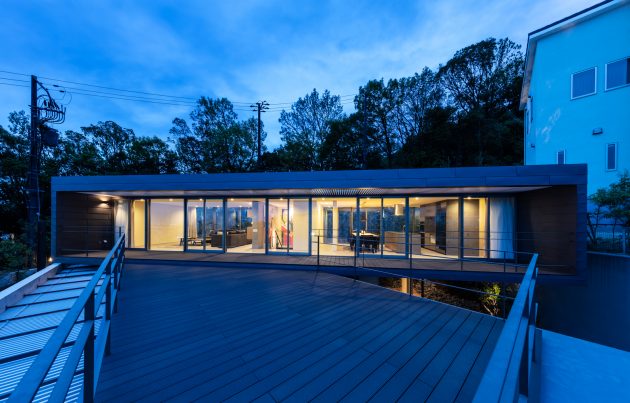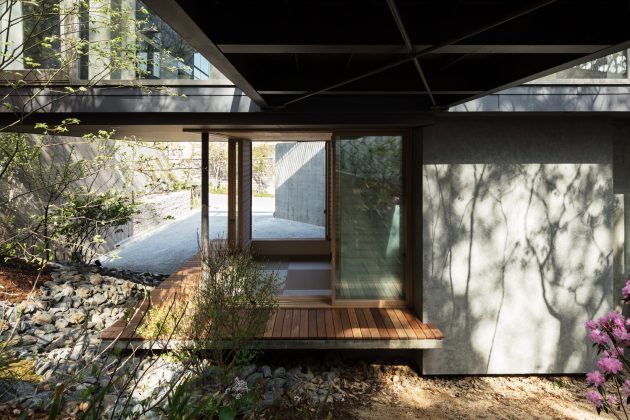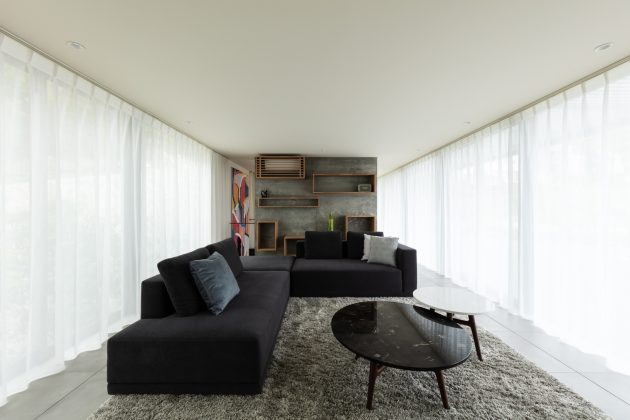Project: Axis House
Architects: T-Square Design Associates
Location: Kobe, Japan
Area: 1,829 sf
Photographs by: Yohei Sasakura
Axis House by T-Square Design Associates
Japanese studio T-Square Design Associates has completed another amazing contemporary residence, this time in Kobe, Japan. You might recall their last project we showcased, the Fuseika House in the Hyogo Prefecture, if not, make sure you give it a look. This time, they have worked on the Axis House – a single family house located on top of a mountain in a newly developed housing area. This gave them the opportunity to make the most out of the views presented by the location.

This single family house is located at a newly developed housing area on a mountain top, looking down on the city that spreads below. The unique shape of the site like a Japanese fan, part of it being a steep hill led to come up with two axis to be set on site and the plan was made according to these two axis.
Since the house is designed for a family from Taiwan, one axis sits on the line that connects Japan and Taiwan, and the other axis connecting Taiwan and China which also matched perfectly with the shape of the site.
Planning the house according to these axis made the house not facing towards the view, the main sales point of the site. However, when the architect first visited the site, he felt very uncomfortable to see all existing houses facing towards same direction, the view, with wide openings (windows) that look like a big mouth, a common axis shared by the community connecting the site and the view.
And in order to see the view, the roads are planned on the opposite side from the view leading the façade of the houses opposite from the view. This means all houses’ back side are facing towards the view. Therefore, when someone approaches this housing area from the bottom driving up, the back side of the houses are to be seen as a townscape. So, to come up with a new axis, the above rule was established connecting three countries and by doing so, each side of the house became the façade without any back side.
The first floor is made of concrete to protect the house from any landslides and the second floor is a steel structure to make the house light. The wide opening on both sides of the second floor allows the mountain wind to blow through the house as well as to achieve the openness and to connect interior with exterior.
–T-Square Design Associates




























